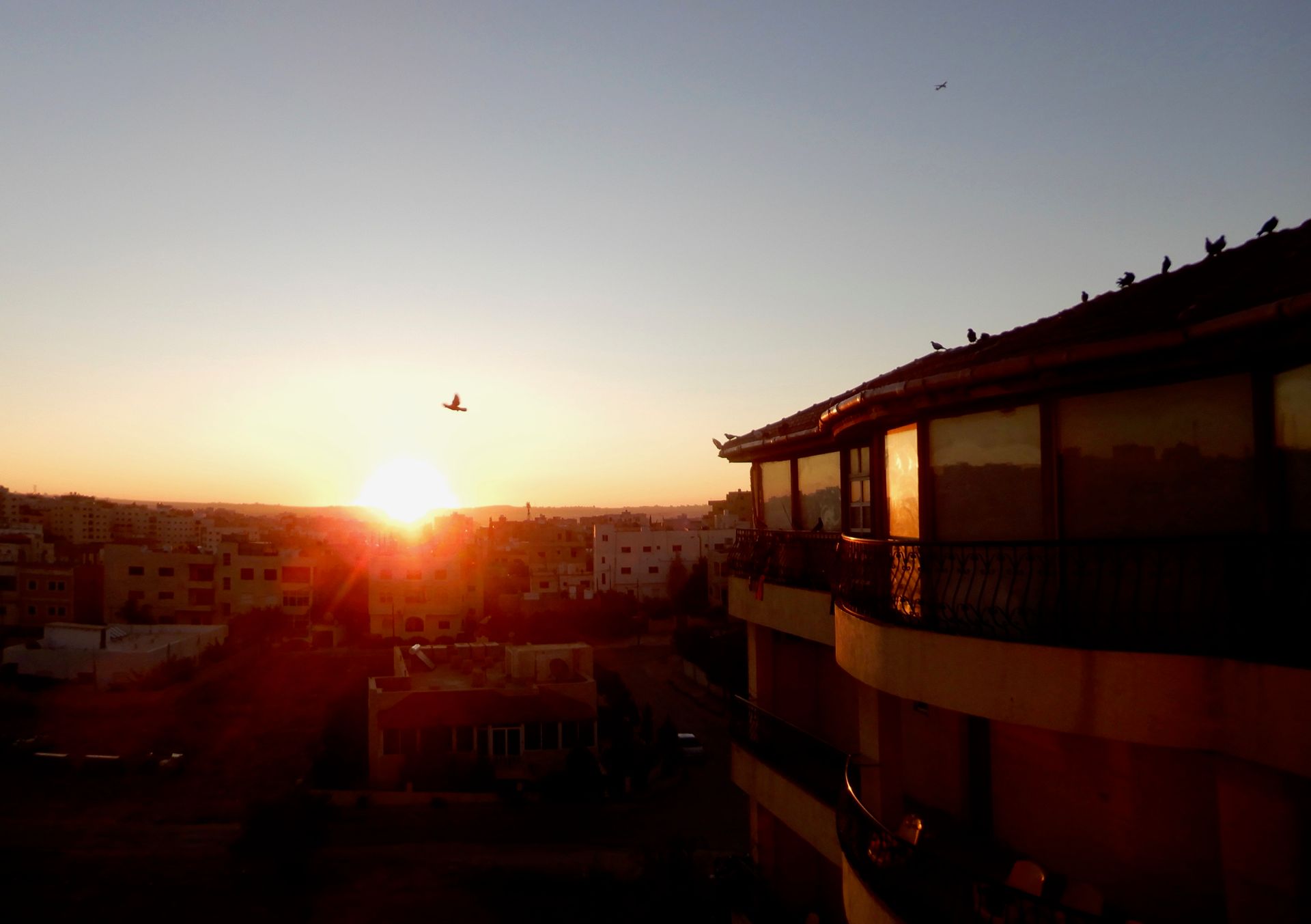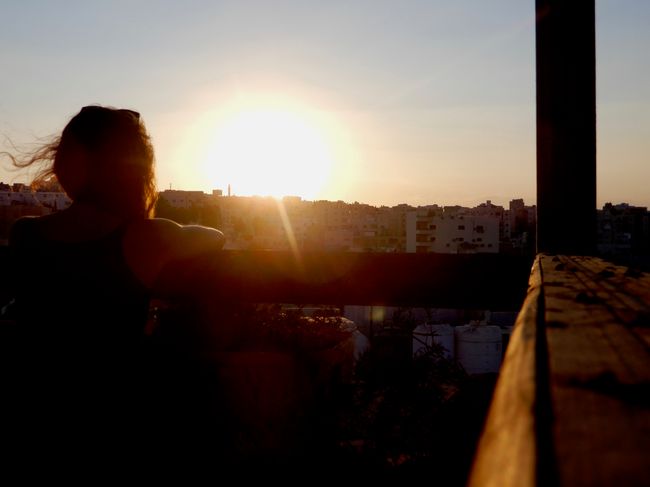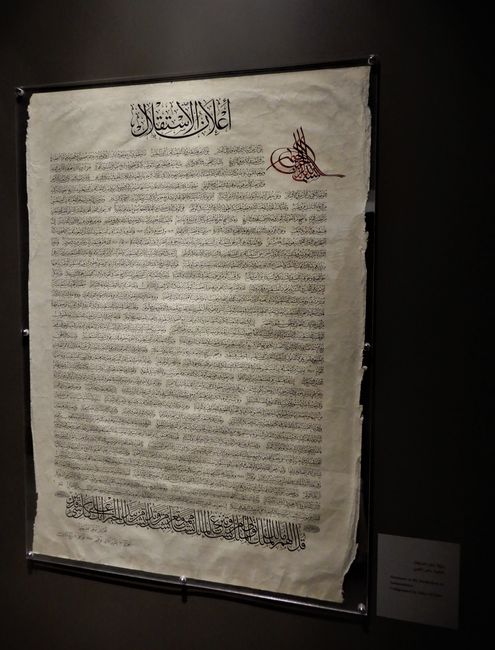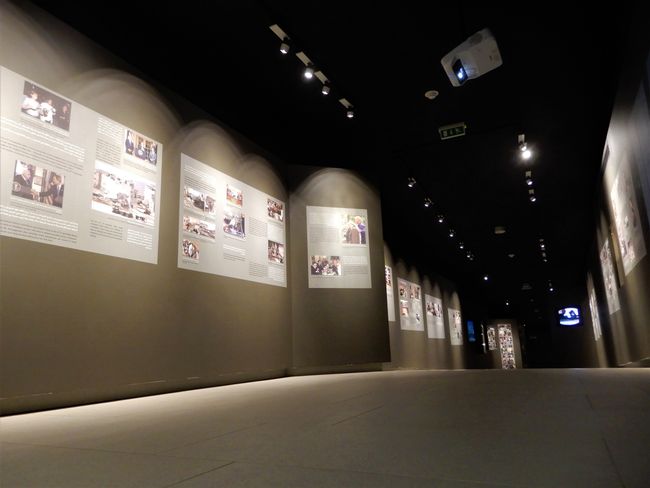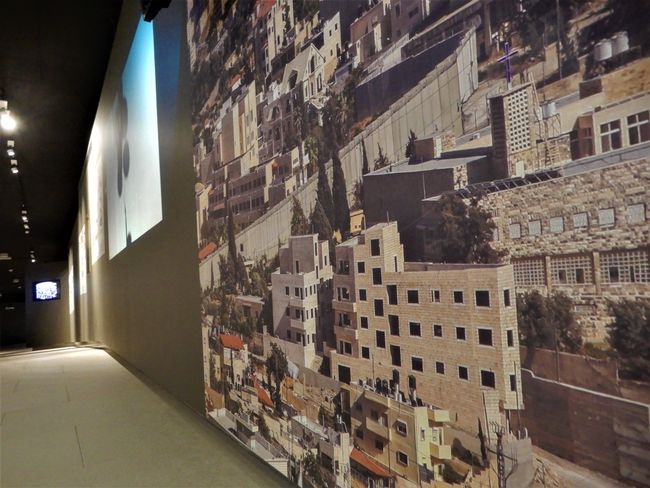Museum Day no. 2
Publicado: 15.02.2020
Tuesday, February 11
11 am. We are a little late again and leave after breakfast, heading towards Arafat Museum. As we leave the hostel, a young man approaches us and warns us not to go in the direction he just came from. He says there are "political activities" there and it took him half an hour to get through the crowds. So we decide to keep walking until we can't anymore, and then take a side street.
The closer we get to the city center, the more people we see with Palestinian flags in their hands. At Al-Manara Square, the most famous roundabout in Ramallah, we find the main part of the demonstration. We will later learn that 10,000 people demonstrated in Ramallah today. Peaceful. In support of the official statement of Palestinian leader Mahmoud Abbas regarding Trump's "Deal of the Century," which is already being planned by the Israeli side. The plan is a "Swiss cheese," as Abbas says. Actually, quite a nice play on words.
We now take some side streets on the way to the museum to avoid getting in the middle of the demonstration and walk through demo groups from time to time. It is noticeable that many of the demonstrators are extremely young. Political apathy, which is often seen at home, is also something that needs to be afforded.
We now enter the museum, receive audio guides, and start our info tour at the beginning of a long corridor. Here, too, the history of Palestine is told since the late 19th century, and here, too, we are presented with a largely one-sided perspective (as is the case with almost all sources that report in any way on the Israel-Palestine conflict). We are aware that Yasser Arafat was neither an angel nor a supporter of non-violent resistance, even though he received the Nobel Peace Prize in 1994. Nevertheless, here, the history of the conflict is presented chronologically and vividly and sheds some more light on the enormous black box called the Middle East conflict.
It becomes clear to us again that Palestinians have been against the partition of the territory of Palestine from the very beginning – something that can easily be forgotten, where the two-state solution is now seen as the only realistic alternative. Furthermore, we now realize the dimensions of the partition plan. Up to this point, about half of the land was without ownership, 47% were in Arab possession, and until then, Jews owned or acquired 6% of the land. Even though until 1947 the number of Jewish residents in the Palestinian area had increased due to refugees from World War II, they still made up only one-third of the total population. However, the UN partition plan provided for 56% of the land for Jewish Israel and 43% for Arab Palestine. As a result of the ensuing Arab-Israeli war, in which Israel won, the state of Israel encompassed 77% of the territory at its founding. It is quite naive to believe that peace could prevail in this area under such initial conditions.
It is somewhat ironic that the UN, in response to the displaced Palestinians, created UNRWA as a "temporary relief program" to care for Palestinian refugees – as the UN partition plan itself was the trigger for the Arab-Israeli war, which had well-known consequences. Since its founding in 1949, the aid program has been regularly extended by three years. According to UNRWA's definition, such persons are considered Palestine refugees who "had their habitual residence in Palestine between June 1, 1946, and May 15, 1948, and lost both their homes and means of livelihood as a result of the 1948 Arab-Israeli conflict." All of this is really so absurd that I don't know whether to laugh or cry.
What the museum overlooks is the high number of Jewish refugees due to World War II in Europe. But not only that: the Arab-Israeli war also resulted in a series of pogroms against Jewish minorities in the Islamic world, which is why during and after the war, more than half a million Jews from Muslim countries fled to Israel. While Israel tried to integrate the Jewish migrants as citizens in the new state, many Arab states refused to integrate the Palestinian refugees into their societies (Israel categorically rejected their return after the war). As a result, Palestinian refugees remained stateless for decades (some still do) in refugee camps.
The PLO, the Palestine Liberation Organization, was established in 1964. It is an umbrella organization that seeks to represent the Palestinians. The fact that the PLO radicalized under Arafat and carried out terrorist attacks is not mentioned in the museum. Nevertheless, Arafat received the Nobel Peace Prize in 1994 together with Israeli Prime Minister Yitzhak Rabin for their efforts to find a peaceful solution to the Middle East conflict. Everyone's hope for lasting peace, and the Palestinians' hope for a state of their own in particular, would not be fulfilled. Negotiations between Israel, the United States, and the PLO for the creation of a Palestinian state never succeeded. Of course, the various factions blame each other for failed negotiations.
The Second Intifada, another violent conflict between Palestinians and Israelis, broke out in 2000, spreading from Jerusalem to the Gaza Strip and the West Bank. The end of this intifada in 2005 coincided with the expansion of the Israeli barrier, the well-known wall that seals off the West Bank from Israel. Even though the UN General Assembly decided in 2004 that this wall violates international law, the construction of the barrier continued. And here we are now. In Ramallah, the characterful city in the middle of the West Bank, shielded from the western part of the country by a huge wall. Even though I was born after the fall of the Berlin Wall, it feels a bit like a part of German history is repeating itself here. The difference being that the people here are still trapped in the nightmare.
The museum's visiting time is almost over and the staff is getting impatient. So we quickly take a look at the facilities in the basement, where Arafat was placed under house arrest by Israel for about 3 years until his death in 2004. Furniture and objects are still in place, making it feel like Arafat lived here just yesterday.
Our heads are filled once again. We find a restaurant where we get cheap and delicious falafel, where Clara joins us again. In the meantime, Aisha has made her way back to Amman. We go for a tea and then gather again at the hostel around the gas stove. It is freezing cold here in Ramallah.
Palestinian Declaration of Independence from 1988. While it did not seal Palestinian independence, since then, the United Nations speaks of a State of Palestine.
Resposta
